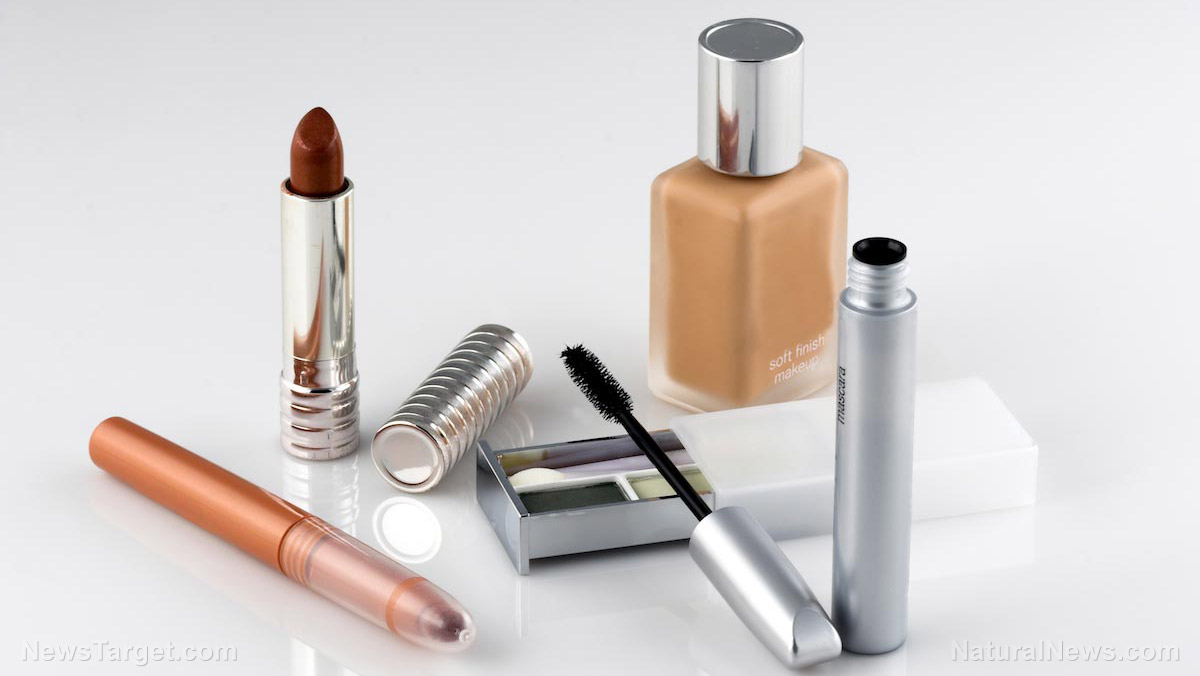Diazolidinyl Urea — toxicity, side effects, diseases and environmental impacts
11/11/2017 / By Earl Garcia

Diazolidinyl urea is a fine white, powder-based chemical that is commonly used as a preservative in various cosmetic and personal care products. According to a Natural Well Being article, the chemical is added to various personal care products in order to prevent spoilage and fend off yeast, bacteria, and molds. The article also notes that the cosmetic preservative acts as a formaldehyde-releasing agent during the preservation process.
The hazardous compound is produced via chemical reaction that involves heating and combining a sodium hydroxide solution into allantoin and formaldehyde. Hydrochloric acid is then used to neutralize the resulting solution. According to the entry, today’s commercially manufactured diazolidinyl urea products contain a blend of various formaldehyde addition products such as polymers.

List of known side effects
Diazolidinyl urea is notoriously associated with a plethora of skin conditions, since it is often present in many cosmetic products. Contact dermatitis is the most common condition that stems from chemical exposure. In fact, a British study has revealed that up to 69 percent of participants have complained of face allergies following chemical exposure. Likewise, 19 percent have exhibited hand allergies after using a skin care product that contains diazolidinyl urea.
Due to its formaldehyde content, diazolidinyl urea is believed to be highly carcinogenic and may elevate the risk of developing nasopharyngeal cancer. The toxic chemical is found to affect the central nervous system as well. Diazolidinyl urea is known to impact the mucous membranes and trigger the onset of headaches. In addition, exposure to the hazardous cosmetic preservative may increase the risk of developing depression.
The toxic preservative is also detrimental to bone and muscle health. According to experts, diazolidinyl urea exposure may raise the odds of joint and chest pain, fatigue and dizziness. The compound is also shown to trigger immune dysfunction and eye damage. Furthermore, an article posted on the open chemistry database Pub Chem has revealed that the toxic substance may also threaten the environment. According to the article, diazolidinyl urea may contaminate waterways and negatively impact aquatic ecosystems and animals.
Body systems affected by diazolidinyl urea
Diazolidinyl urea primarily targets the skin. Likewise, the hazardous chemical is notoriously detrimental to the central nervous system and the body’s overall immunity. The cosmetic preservative may also negatively impact the eyes, bones, and muscles.
Items that can contain diazolidinyl urea
Diazolidinyl urea is known for its high water solubility, which makes it a potent preservative in nearly all water-based cosmetics, toiletries, and cold mix formulations. The chemical is commonly added to a wide array of liquid and powder products such as baby lotion, skin creams, and sunscreens as well as shampoos, eyeliners, blushes, and perfumes. Likewise, trace amounts of the cosmetic preservative can be seen in deodorants, hair dyes, shaving creams, and face masks.
How to avoid diazolidinyl urea
It is advisable to always check labels when buying cosmetics and personal care products to avoid diazolidinyl urea exposure.
Where to learn more
- Common household toxins you should avoid – especially if you have children
- Carcinogens You’re Inhaling Everyday Without Realizing It
- Killing You Softly; Confessions of your Skin Care
- The “Dirty Dozen” Of Common Cosmetic and Skin Care Ingredients
- Toxic heavy metals in lipsticks threaten health of women and unborn babies
- The 6 most popular toxins Americans coat their bodies with, and then wonder why they’re suffering from inflammation, rashes, skin allergies and cancer
Summary
Diazolidinyl urea may cause contact dermatitis and nasopharyngeal cancer.
Diazolidinyl urea triggers mucous membrane damage, headache, and depression.
Diazolidinyl urea raises the odds of joint and chest pain, fatigue, and dizziness.
Diazolidinyl urea exposure may lead to immune dysfunction and eye damage.
Diazolidinyl urea is detrimental to the skin and the central nervous system.
Diazolidinyl urea negatively affects the eyes, bones, muscles, and the immune system.
Sources include:
Tagged Under: Diazolidinyl urea




















